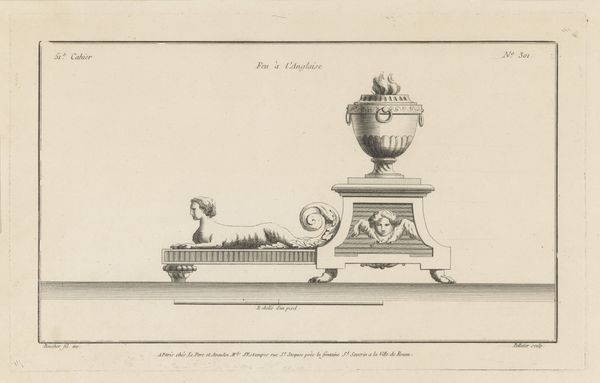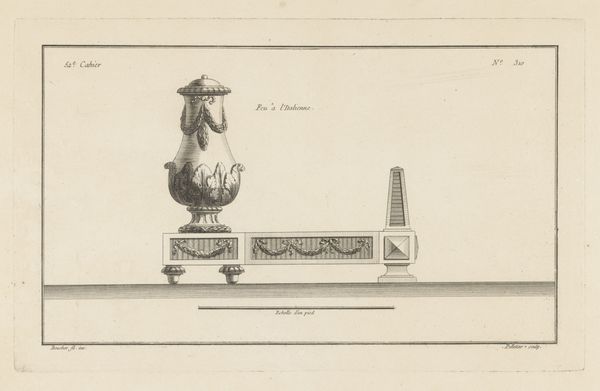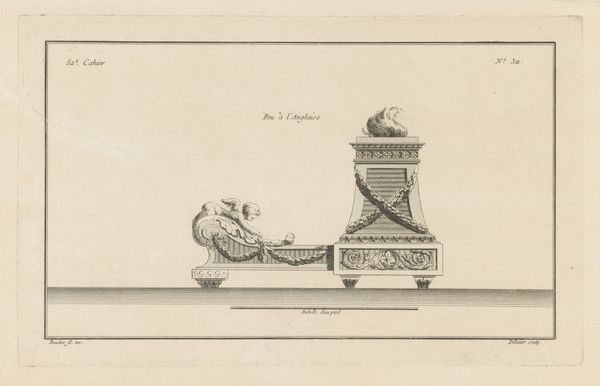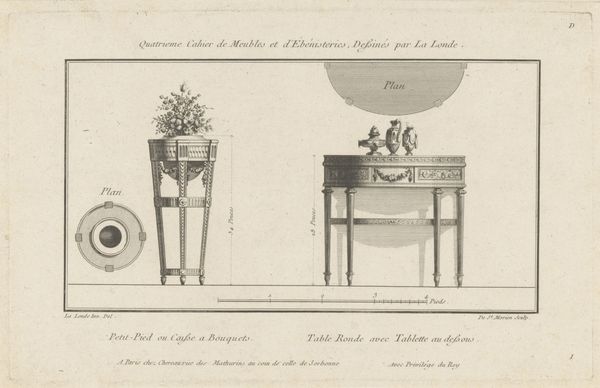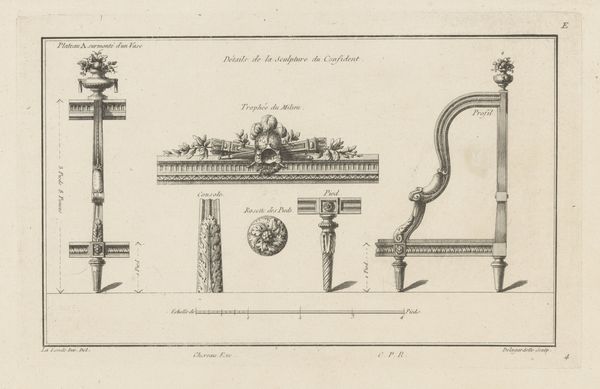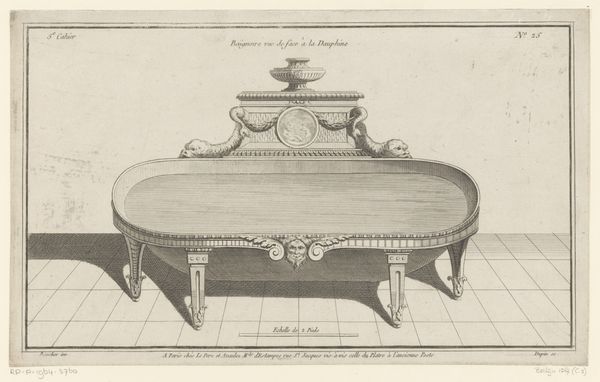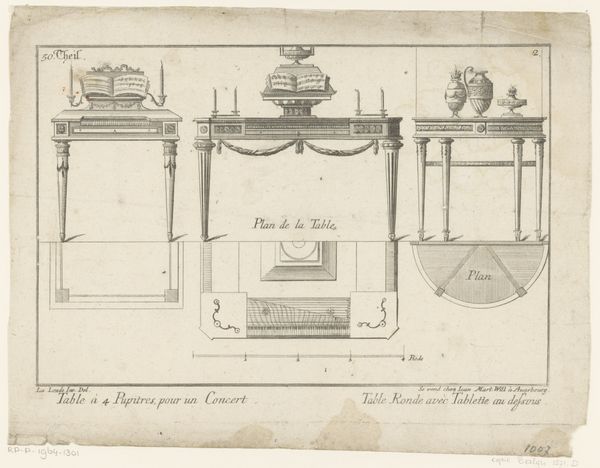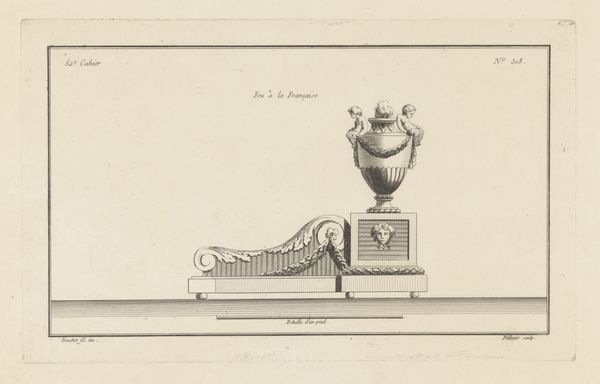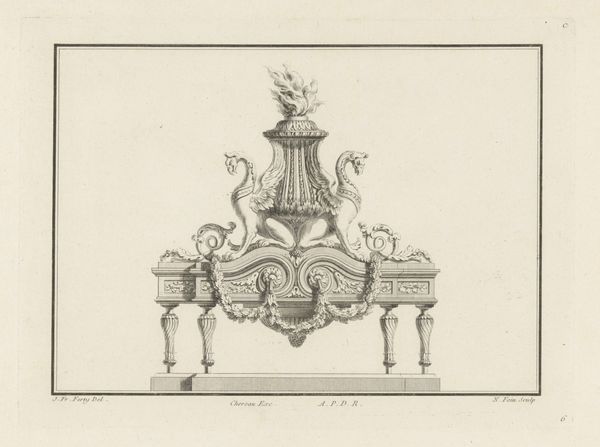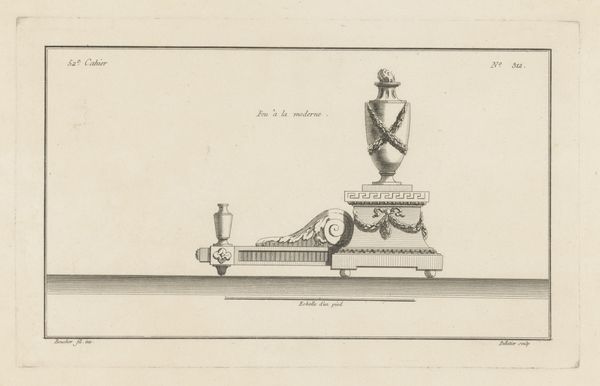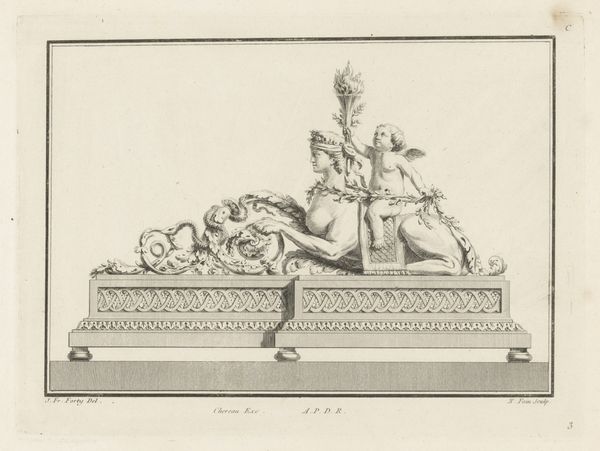
drawing, paper, engraving
#
drawing
#
neoclacissism
#
old engraving style
#
figuration
#
paper
#
geometric
#
line
#
history-painting
#
academic-art
#
engraving
Dimensions: height 205 mm, width 330 mm
Copyright: Rijks Museum: Open Domain
Curator: The crisp lines and serene stillness immediately strike me. There’s a formality, an order that feels very grounded and classical. Editor: Exactly! This is “Vuurbok met putto en vazen”, or “Fire Dog with putto and vases” by Jean Pelletier, created between 1772 and 1779. It’s currently held at the Rijksmuseum, and it is an engraving done in the Neoclassical style. Curator: Neoclassical, fitting. But what is its social function? This appears to be a very...specific type of object, divorced from contemporary discussions of say, trauma or social justice. How do we situate it now? Editor: Well, in the late 18th century, Pelletier was deeply entrenched in academic art circles. The function of art was often tied to notions of civic virtue and refined taste, a certain public role in cultivating enlightened ideals. This work demonstrates the aspirational aesthetics circulating at the time. Curator: Absolutely, but doesn’t this drawing serve a commercial purpose too? An artisan displaying what is à la mode, what his workshop could potentially craft? To be able to commission one for your estate signaled your family’s status, class, taste and understanding of how wealth could project aesthetic power. Editor: Precisely. Notice the precise linework, indicative of the engraving process. Each stroke is carefully rendered, contributing to the overall effect of refinement and sophistication. It underscores the technical prowess of the artisan. Curator: True, and let’s talk about the "putto," that chubby infant figure leaning against the vase. What cultural ideas is that angelic figure referencing or upholding? Those visuals of innocence have histories rooted in problematic religious structures and imperialist visual narratives. Editor: You’re right. Considering it through today's lens makes us question those historical contexts. What was celebrated then can and should be questioned now. Looking closely allows us to interrogate our current values through the perspective of these images. Curator: Indeed. So much to consider here – these pieces and images carry narratives about what society valued during their conception and continue to tell the evolving narratives of visual cultures. Editor: A single artwork can encapsulate entire worlds.
Comments
No comments
Be the first to comment and join the conversation on the ultimate creative platform.
